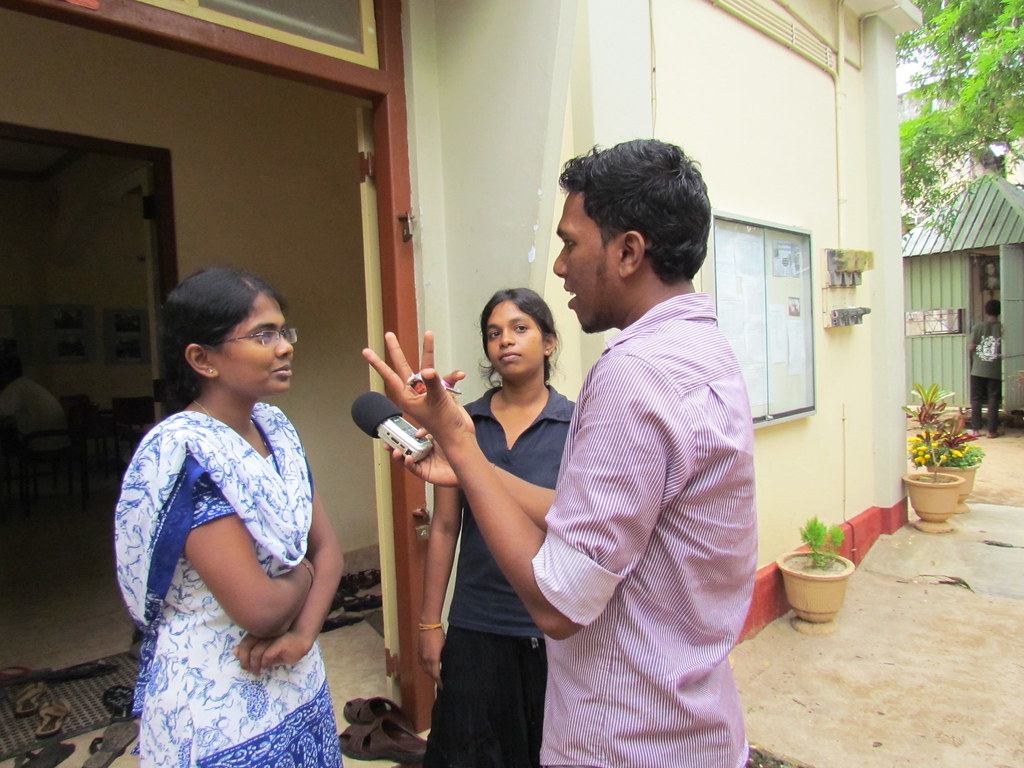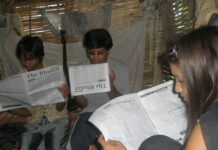
Launching a community radio station is about more than just broadcasting news, it’s about creating a hub for local voices, sharing vital information, and building community spirit.
Success depends on understanding your audience, mastering radio storytelling, and fostering participation through engaging community programming. It also involves having a unique editorial proposition and a sustainable business model. Here’s how to do it, with expert resources and actionable tips.
- Know your audience and community needs
- Before you produce any content, identify your target audience and their information needs. This will help you set out your core editorial proposition.
- Use surveys, community meetings, and social media to learn what matters most to your listeners.
- This ensures your programming is relevant, inclusive, and engaging.
- Business model
- One you know who you are broadcasting for, what their needs are and what your editorial proposition is, you need to figure out how your community radio station will survive financially. This is where you need to work out your business model.
- Audience research: In step one you identified the target audience and information needs. Now you need to know more about their daily habits so that your output can fit into their lives and meet those needs
- Audience behaviour: You also need to understand how new platforms and devices are changing audience behaviour and adapt your output to meet the need.
- Sales strategy: Your business model might involve adverts being played between programmes and news bulletins. For this you need to develop a sales strategy.
- Business model: When you have all the above you can then work out your business model.
- One you know who you are broadcasting for, what their needs are and what your editorial proposition is, you need to figure out how your community radio station will survive financially. This is where you need to work out your business model.
- Creating community-focused programming
- Community radio thrives on participation and local relevance. Here’s how to make your station a true community hub:
- Radio is about voices: Community radio is about the community’s voices. Invite residents, local leaders, and grassroots organisations to share news, stories, and opinions. This not only diversifies your content but also builds trust.
- Interactive segments: Host live call-ins, question and answer (Q&A) sessions, and real-time polls. Encourage listeners to send in questions, comments, or song requests.
- Showcase local talent: Dedicate regular slots to local musicians, poets, or storytellers. This supports the arts and attracts new listeners.
- Collaborate with community groups: Partner with schools, charities, and cultural organisations to co-produce shows, cover events, or run educational series.
- Highlight community initiatives: Cover local campaigns, events, and projects. Give airtime to community announcements and volunteer opportunities.
- Run contests and giveaways: Organise on-air competitions to encourage participation and reward loyal listeners.
- Use social media for engagement: Promote shows, gather feedback, and share highlights on the most popular social media platforms used by your community. This extends your reach and fosters dialogue.
- Gather and use feedback: Regularly collect listener input through surveys or focus groups and adapt your programming accordingly.
- Community radio thrives on participation and local relevance. Here’s how to make your station a true community hub:
- Editorial ethics and values
- As with all programming and journalism, editorial ethics are essential in order to deliver reliable content to your audience. Below are some of the most important areas for consideration when training your team:
- Accuracy: Everything you publish has to be accurate.
- Fairness: When dealing with any story, especially those affecting a small community, you must ensure that all you produce is fair.
- Privacy: Respecting the privacy of individuals when covering community news requires sensitivity and understanding. You journalists need to understand how far they can go when seeking information.
- Offence: There might be some in your community who take offence at what you broadcast. Make every effort to ensure that what you produce does not cause offence.
- Impartiality: Communities often become divided over issues. You must ensure that you never take sides.
- Unconscious and conscious bias: To be impartial a journalist needs to understand their own biases, particularly unconscious biases.
- Integrity: All journalists need to ensure that they operate with integrity.
- All the above are essential for ensuring your community radio station’s brand loyalty.
- As with all programming and journalism, editorial ethics are essential in order to deliver reliable content to your audience. Below are some of the most important areas for consideration when training your team:
- Crafting news packages with integrated audio
- A strong news segment is the backbone of your station. Here’s how to make yours stand out:
- Use sound to tell stories: Your voice is your primary tool, but constructing a news package for radio requires more. Integrate interviews, ambient sounds, and real-life audio clips to bring stories alive.
- Introduce audio clips clearly: Always set up audio clips with a concise introduction. Identify the speaker or sound, but don’t repeat their words. Let the audio deliver its impact.
- Select only the best audio: Choose short, powerful clips that move the story forward. Edit for clarity and relevance.
- Script as a bridge: Write your script so narration and audio flow naturally. Use narration to provide context and connect audio segments.
- Atmosphere and wild track: Incorporate ambient sounds (wild track) and effects to immerse listeners in the scene.
- Chronology and clarity: Structure your package so listeners can easily follow the timeline and key points.
- Edit for flow: Edit audio for radio news using fades and crossfades for smooth transitions. Edit bulletins to remove repetition and ensure logical order.
- Further learning: Deepen your skills with our lesson on ‘packaging news for radio’.
- A strong news segment is the backbone of your station. Here’s how to make yours stand out:
- Producing and presenting radio news bulletins
- How you deliver the news you have gathered requires skill. Here are some things to keep in mind.
- Structure bulletins logically: Follow best practices for producing radio bulletins: start with the most important stories, use clear headlines, and mix hard news with lighter content.
- Keep it conversational: Write as you would speak, use short sentences, and avoid jargon. Always double-check your facts.
- Engage with local issues: Focus on stories that resonate locally, and invite community members to share their perspectives.
- How you deliver the news you have gathered requires skill. Here are some things to keep in mind.
- Making documentaries and in-depth features
- Radio documentaries allow for deeper investigation into local issues and stories. To create compelling features:
- Research thoroughly: Gather background information and multiple perspectives.
- Proactive journalism: Community radio is all about finding the stories that matter to your audience. This means you have to be proactive in your approach to news gathering.
- Story development: One of the strengths of community radio is that it is closer to the audience and can dig deeper to cover stories in greater depth. This requires applying story development methods to the more important stories.
- Structure the narrative: Plan your story arc-introduction, development, climax, and resolution. Use a mix of narration, interviews, and ambient sounds.
- Edit for Impact: Learn advanced techniques for making documentaries and check out the Lesson: Radio Documentaries.
- Radio documentaries allow for deeper investigation into local issues and stories. To create compelling features:
Summary
| Element | Purpose | Best Practices |
|---|---|---|
| Audience identification | Know who you serve | Surveys, meetings, ongoing feedback |
| Editorial proposition | What you offer that is original and different | Discover the information needs of the audience and meet them |
| Community programming | Engage and empower listeners | Live call-ins, local talent, partnerships, social media, feedback loops |
| Editorial ethics | Providing programming with integrity | Accuracy, fairness, privacy, offence, impartiality, and integrity. |
| News package | Deliver engaging stories | Expressive voice, actuality, soundscape, clear chronology |
| Script writing | Communicate clearly | Simple language, conversational tone, fact-checking |
| Bulletin production | Inform and update audience | Logical structure, varied content, clear headlines |
| Audio editing | Ensure quality and flow | Remove errors, balance sound, smooth transitions |
| Documentary making | In-depth look into issues | Thorough research, narrative planning, immersive sound use |
Conclusion
Setting up a community radio station is about building trust, telling authentic stories, and giving your community a voice. By integrating strong audio, professional news practices, and vibrant community programming, your station can become a vital, engaging part of local life. By following these principles and applying these resources, your community radio station can inform, inspire, and serve your local audience.
 Below is an assignment which we have created for trainers to use when teaching students how to set up a community radio station.
Below is an assignment which we have created for trainers to use when teaching students how to set up a community radio station.
Assignment: Planning and launching a community radio station
You have been selected as part of a team to plan, launch, and manage a new community radio station in your area. Your goal is to create a station that informs, inspires, and serves your local community by applying the principles and best practices outlined in the text above.
Part 1: Audience and editorial proposition (20 marks)
- Audience research
- Describe your local community and identify your target audience.
- Explain how you would research their information needs (for example – surveys, meetings, social media).
- List three key topics or issues your audience cares about.
- Editorial proposition
- Write a short editorial mission statement for your station (2-3 sentences).
- Explain what will make your station unique compared to other media in the area.
Part 2: Community programming plan (20 marks)
- Participation
- Propose two interactive segments (for example – call-ins, questions and answers, contests) to encourage community involvement.
- Suggest one way to showcase local talent.
- Partnerships
- Identify two local organisations or groups you could collaborate with and describe a potential joint project.
- Suggest how you would work together.
Part 3: Business model and sustainability (15 marks)
- Outline a basic business model for your station.
- How will you generate income (for example – ads, sponsorship, fundraising)?
- How will you ensure your programming fits your audience’s habits and preferences?
Part 4: Ethics and editorial standards (15 marks)
- List and explain three editorial ethics or values you will prioritise (for example – accuracy, fairness, privacy).
- Describe a potential ethical dilemma you might face and how you would resolve it.
Part 5: News and documentary production (20 marks)
- News package
- Outline the steps you would take to produce a two-minute radio news package on a local issue.
- Explain how you would use audio elements (interviews, ambient sound) to enhance your story.
- Documentary feature
- Propose an idea for a short (10-minute) radio documentary about your community.
- Briefly describe how you would structure the narrative (introduction, development, climax, resolution).
Part 6: Reflection (10 marks)
- In 150–200 words, reflect on the importance of community radio in building trust and giving a voice to local people.
- Discuss one challenge you anticipate in setting up the station and how you would address it.
Submission guidelines
- Format your assignment clearly with headings for each section.
- Use examples from your own community where possible.
- Cite any additional sources if used.
- Submit your assignment as a PDF or Word document.
Total Marks: 100
Lesson plan for trainers
If you are a trainer of journalists we have a free ‘Community Radio’ lesson plan which you are welcome to download and adapt for your own purposes. The assignment (above) can be used at the end of the lesson.









